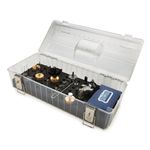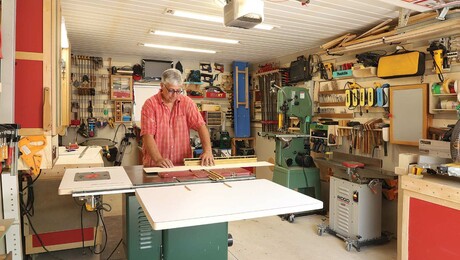Trimming the Ends of a Benchtop
I needed to trim the ends of a 300-lb., 4-in.-thick oak workbench top. A circular saw wouldn’t handle the thickness and pushing the heavy workpiece across my bandsaw would be dangerous. So I decided to set up two parallel rails and use a router across the end to trim it level.
I started by penciling a trim line around the end of the workpiece. To make the idea work, I needed to attach two rails to the outside edges of the workpiece that were parallel to the layout line and each other. The rails needed to be offset horizontally as well as vertically, and on opposite sides of the workpiece. I accomplished this using two Lee Valley Precision Machinist Squares. I put both heads on one rule, lining up one head with the layout line and the other with the desired fence height. This created a clear reference for setting the rail’s height. Repeating this offset at each end of the rail gave me perfect parallel alignment at the right offset. With an auxiliary base attached to the router, it was then easy to flatten the end of the workbench in small, incremental passes.
Drawing: Jim Richey
None
Fine Woodworking Recommended Products

Woodriver Rechargeable Desiccant Bag

WoodRiver Router Bit Storage Case
























Log in or create an account to post a comment.
Sign up Log in